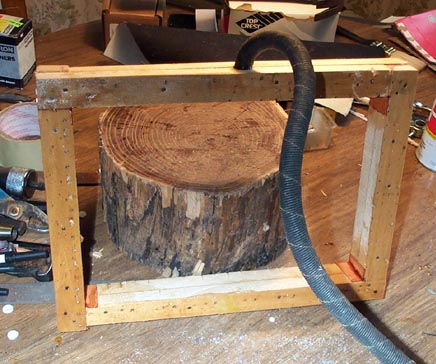
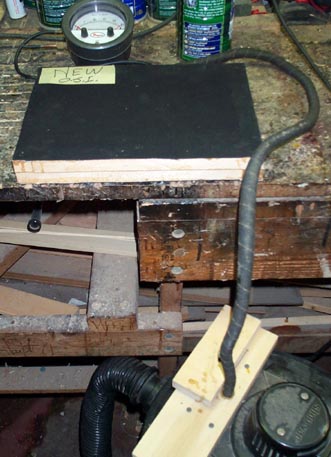
Chapter 4.4 - Testing the Bellows Cloth
I want this restoration to be as good as possible in every respect, including as much freedom from leakage as possible. So I decided to take Craig Brougher's and D. L. Bullock's very good advice, and test the cloth for freedom from leaks. I mad a simple test chest from scrap wood (won't win any prized for neat finish, but it works). Then I covered both sides of the frame with the cloth; one side with some old material had gotten 5 years ago from Schaff, and the other with new cloth just purchased from another vendor. The rig on the discharge of the ShopVac is an adjustable vent port on the hose fitting, by means of which I can vary the pressure in the hose from 4" to 18" WC.


A mixture of 3/1 water and dishwashing liquid is painted on cloth while under pressure; I picked 10" WC. If the cloth is porous, the wetted area will stay white from a thin layer of microscopic foam formed on the surface. Discrete pinholes will show up by blowing bubbles. First I tried the side with the old cloth, with the good results shown. When the liquid is first brushed on, white streaks of foam appear due to the act of brushing. But after a minute or two, if there is no porosity, this disappears, leaving the cloth black but very wet.
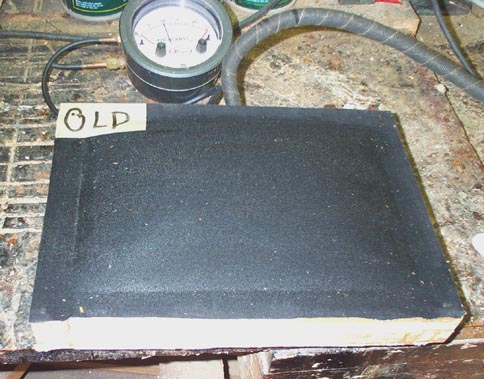
I would have stopped right here and used this cloth, but I don't have enough to complete the job. The huge reservoir of an Orchestrelle (5'-6" x 2'-6") needs a three yard long piece. So I purchase 4 yards of similar material from another supplier. It is good thing that I tested; see the results, first as soon after I brushed on the liquid as I could switch from the brush to the camera.
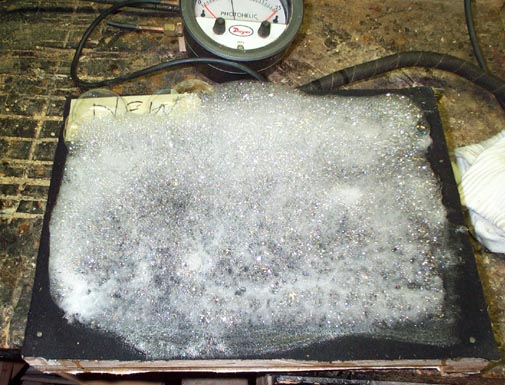
Then after five minutes. After that long, the mass of foam didn't increase very much, since by then the original bubbles started popping (I could watch this happen) as fast as new ones formed.
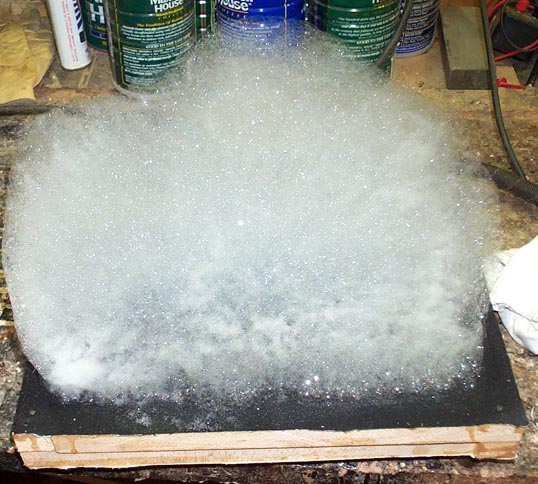
I do not mention the name of the vendor of this cloth, because they did make a full adjustment. As soon as they received a copy of this chapter as written so far, they immediately refunded my money, and arranged to ship the bad material back at their expense. But they were out of stock of any suitable replacement, so I went back to Schaff and purchased their new catalog number 661. I was assured by telephone that this is the genuine Australian "Felix" product. I tested it with the following result:
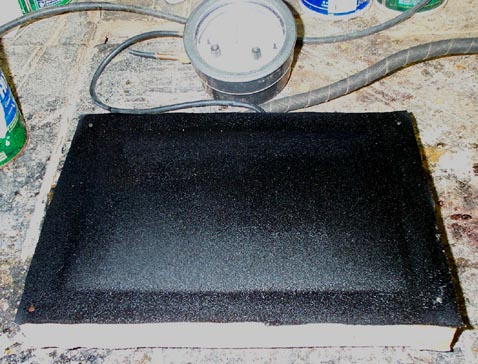
This Felix - Australian cloth is superior in every way, not only in its freedom from leaks. It is even and smooth, and stretches just right when being glued on. If it is torn crosswise to expose the rubber layer, that layer is found to be thick, even and very stretchy. This releases the odor of fresh, genuine gum rubber; not the musty, sulfurous smell of old rubber that any rebuilder knows. According to Mr. Bullock, only Schaff and Organ Supply Industries are licensed to sell Felix products, but you have to insist on them; vendors are stuck with lots of older, unsatisfactory stock that they would like to unload on the unwary. Read Mr. Bullock's article in MMD for more details about this.